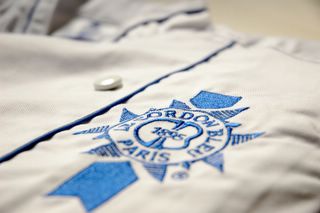
Of course the first thing I did when I got home was to take a photo of the jacket and the tools to commemorate this landmark day. Next I labeled all the knives and spatulas and sharpening iron and brush and scraper and whatever else are in that heavy tool kit. I also tried out the chef’s knife and the vegetable peeler while preparing dinner that night. The knife was so sharp that I’m seriously worried because I’m known to be dangerous around sharp objects. The Wusthof peeler, on the other hand, was not as good as my OXO one as it didn’t have much of a grip. I might need to bring my own.
When the excitement subsided I started to get a little nervous. I mean, just by looking at all the tools you know they mean business. What if I can’t understand the teacher’s lectures? What if I fail the test and can’t go on to the next level? And what if, gasp, I don’t actually have any talent at patisserie? To calm myself down and stop my brain from going into overdrive imagining all kinds of worst-case scenarios, I decided to get organized and copy down the curriculum into my day planner. To my great relief, the first demonstration involves flan and crème brulee. Having made a very successful crème brulee only last week, I felt my confidence lift a little. As I read on, I found out that the first part of the basic course is almost entirely dedicated to tarts, specifically pate brisee and pate sablee, both of which I am pretty confident about. After all, I am the unabashedly self-proclaimed Queen of Tarts. This made me feel slightly better and I was able to breath normally again. I bet everyone gets a little pre-LCB jitters? I’ll find out soon from my classmates.
Oh, for those who are looking forward to more photos from my LCB lessons, I am afraid I am going to have to disappoint you. We were told at orientation that showing photos taken in class in a public media, either of the teacher demonstrating or of the teacher’s creations, is strictly prohibited. Blogging was singled out as a no-no, and I could swear the teacher looked in my direction (or is it just my guilty conscience?). We are allowed to show photos of our own work, however, so please drop by and see what I made in class. (I am just afraid that they are not going to be as pretty as the teachers’.) Personally I don’t know why they’re being so tight-assed about this. It’s not as if someone will be able to deduce the recipe just by looking at a couple of photos. However, I am trying to graduate from that school so I thought I shouldn’t break any rules lest my chance of getting a diploma is jinxed.




 Stumble It!
Stumble It!